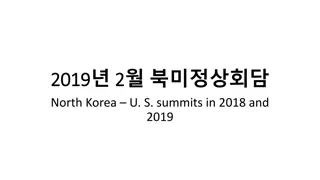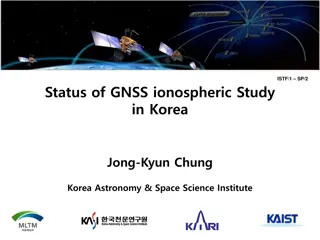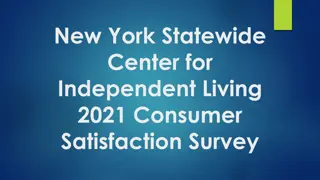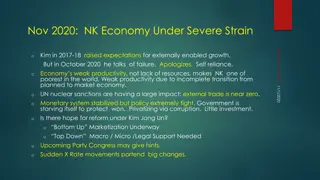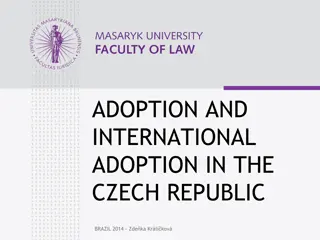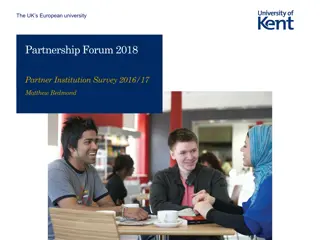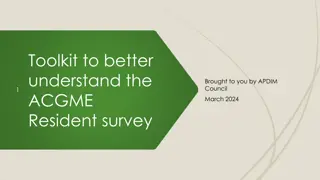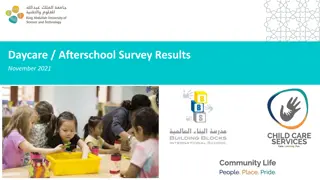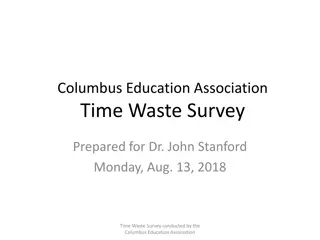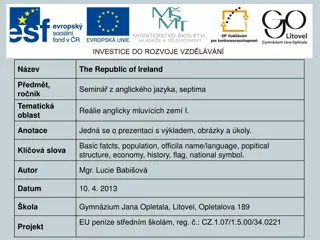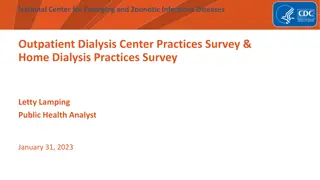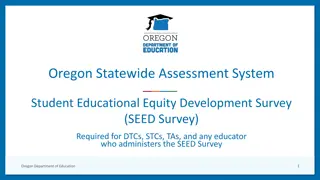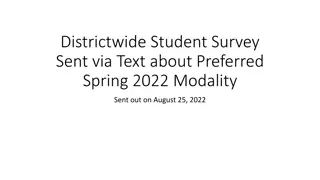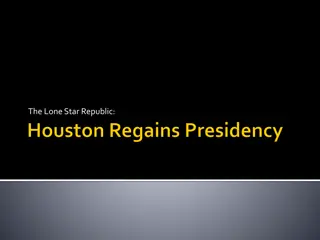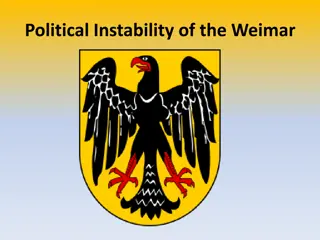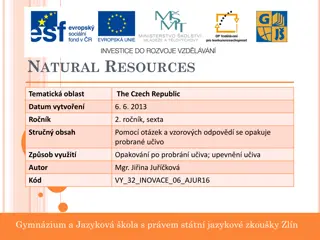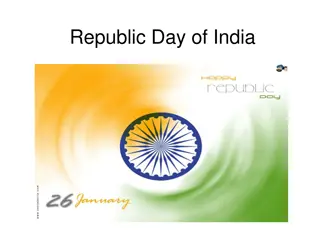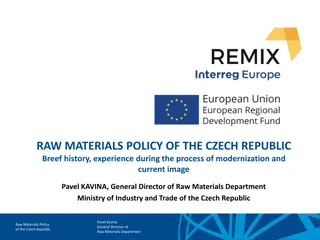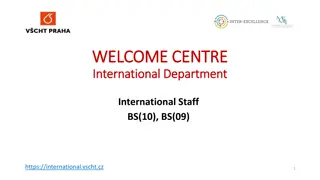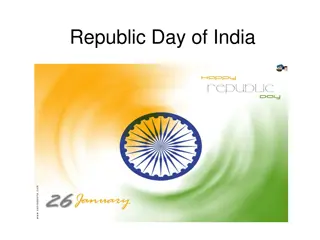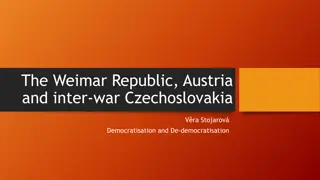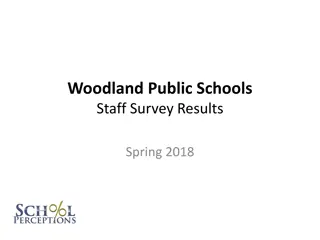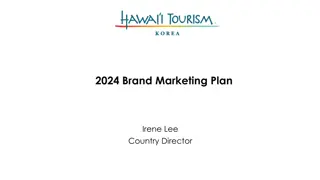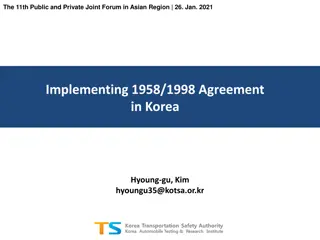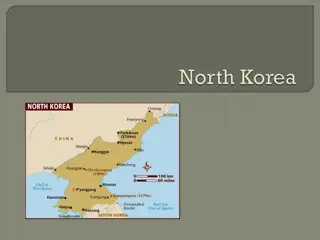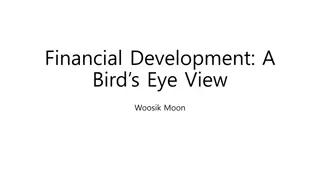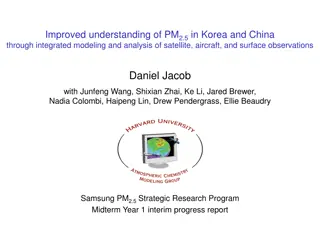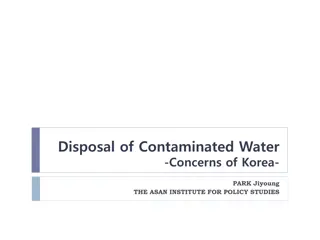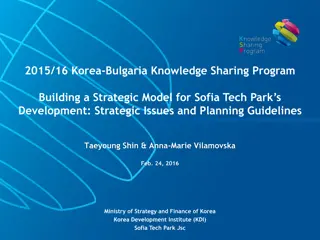Centenarian Survey in the Republic of Korea: Overview June 2018
The Centenarian Survey in the Republic of Korea conducted in June 2018 aimed to provide key information about centenarians for policymakers and academia. The survey confirmed the accuracy of age information in the census and addressed challenges in age verification. Motivated by South Korea's aging population, the survey explored various aspects of centenarians' lives, including demographics, lifestyle, and health status while collaborating with government authorities and research institutions.
Download Presentation

Please find below an Image/Link to download the presentation.
The content on the website is provided AS IS for your information and personal use only. It may not be sold, licensed, or shared on other websites without obtaining consent from the author. Download presentation by click this link. If you encounter any issues during the download, it is possible that the publisher has removed the file from their server.
E N D
Presentation Transcript
Overview of the Centenarian Survey in the Republic of Korea June 2018 Eunkoo Lee
Motivation S.Korea is rapidly ageing due to fertility decline, rising life expectancy and little migration - TFR (1960s) 6.0 TFR (1983): 2.01 TFR(2017): 1.05 - LE (1970) 62.3 LE (1987): 70.1 LE(2016): 82.4 < # of centenarians in UK and S.Korea > CC 25.0 22.4 18.6 20.0 14.6 15.0 11.6 9.8 10.0 7.7 6.4 3.8 5.0 2.0 2.0 1.1 1.1 0.0 1990 1995 KOREA(per 100,000) 2000 2005 2010 2015 UK(per 100,000) 2
Motivation Population aged 65+ relative to the population 15-64 in 2000 and 2050 source: OECD(2006) 3
Overview of the survey(1990~2015, 5 years) < Purpose > To provide basic information(size, characteristics) of the centenarians to policy makers, academia, media, etc To confirm the accuracy of the age information in the census by re-enumerating all persons aged 98+ < Reference Period > November 1, 2015 (census reference period) < Method > Total enumeration of 9,200 persons identified as aged 98+ in 2015 census < Mobilization of enumerators > 400 enumerators (including supervisors) 4
Overview of the survey(1990~2015, 5 years) < Questions > Questions for age verification: Korean age, date of birth(solar and lunar calendar), registered date of birth, age at giving first(latest) birth and current age of that first(latest) child, number of siblings ages of immediate older and younger sibling age at first marriage, age at Korean War (1953) Questions for life styles, dietary pattern, health status, living arrangement, family, religion, educational attainment, main lifetime occupation, secrets to longevity, etc Work closely with Ministry of Health and Welfare, Ministry of the Interior and Safety, academia, R&D, etc 1990 1990 1995 1995 2000 2000 2005 2005 2010 2010 2015 2015 Number Number 18 18 24 24 28 28 30 30 29 29 31 31 5
Challenges in age verification Conflicting centenarian counts - 9,200 persons identified as aged 98+ in 2015 census - 16,209 persons identified as centenarians in 2015 population registration of all residents in S.Korea - 2016 centenarian survey result: 3,159 - Discrepancy due to unreported or delayed death registration(particular those who live abroad), misreporting actual age(including intentional among older persons) 6
Major findings 3,159 persons, women(2,731) accounting for 86% Reside at mostly mountainous and costal areas 44.6% of them live with family members in household, 43.1% in senior facilities Most of them with little formal education 55.2% have religion 73.2% are suffering from a range of medical problems(high blood pressure, dementia) 73% of them are life-long abstainers from drinking and smoking Secrets to longevity: Moderate dietary habits and regular lifestyle 7
Conclusions and lessons learned The centenarian survey serves as a benchmark and supplements age information in the census and population registration. Considered as the most authoritative source of information on centenarians that is conducted on a regular basis (used by media, academia, government agencies etc) It is not easy to verify the actual ages of centenarians due to misreporting, cognition problems etc. (more information the better to address this issue) 8



